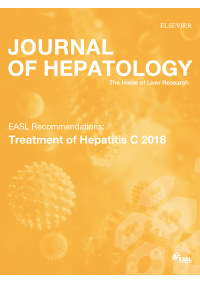
Treatment of Hepatitis C – 2018 EASL Recommendations
Hepatitis C virus (HCV) infection is a major cause of chronic liver disease. As a result, worldwide there are approximately 71 million chronically infected individuals. Clinical care for patients with HCV-related liver disease is advancing considerably. Most importantly thanks to an enhanced understanding of the pathophysiology of the disease. And also because of developments in diagnostic procedures and improvements in therapy and prevention. EASL Recommendations on Treatment of Hepatitis C describe the optimal management of patients with acute and chronic HCV infections in 2018 and onwards.
Data about the Treatment of Hepatitis C virus (HCV)
Hepatitis C virus (HCV) infection is one of the main causes of chronic liver disease worldwide. The long-term natural history of HCV infection is highly variable. The hepatic injury can range from minimal histological changes to extensive fibrosis and cirrhosis with or without hepatocellular carcinoma (HCC). There are approximately 71 million chronically infected individuals worldwide. Most importantly, many of them are unaware of their infection, with important variations according to the geographical area. Most importantly, clinical care for patients with HCV-related liver disease has advanced considerably during the last two decades.
The primary goal of HCV therapy is to cure the infection. In conclusion, to achieve a sustained virological response (SVR) defined as undetectable HCV RNA 12 weeks (SVR12). Or 24 weeks (SVR24) after treatment completion. Above all an SVR corresponds to a cure of the HCV infection, with a very low chance of late relapse.
These recommendations were first presented at the International Liver Congress 2018. Also the Journal of Hepatology published them. Most importantly, they give a comprehensive overview of the EASL 2018 recommendations on the management of hepatitis C virus infection.
Download the EASL Recommendations Treatment of Hepatitis C as PDF or as PPT Slide Deck.
Read more about hepatitis C in the Journal of Hepatology. Also, discover the latest EASL news.

